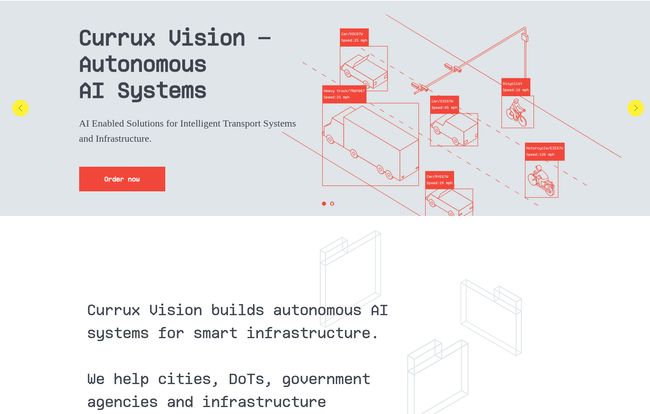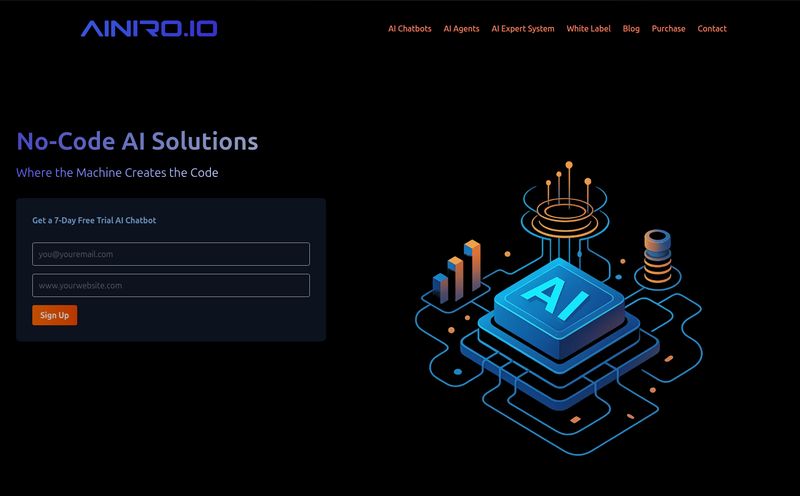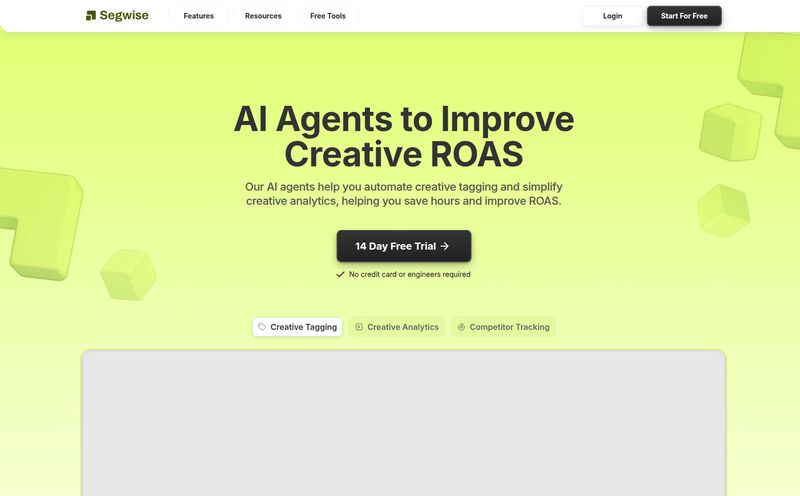As someone who’s been neck-deep in tech trends for years, my eyes tend to glaze over whenever I hear the term “smart city.” It conjures up images of slick, futuristic presentations with flying cars and holographic ads, concepts that feel perpetually five years away. We're promised a utopia of efficiency, but often get solutions looking for a problem. So when another AI platform for “intelligent infrastructure” lands on my desk, my skepticism is already brewing.
But every now and then, something cuts through the noise. Something pragmatic. Something that feels… well, useful. That’s the vibe I’m getting from Currux Vision, and I have to say, I’m intrigued.
Instead of promising to rebuild our cities from the ground up, they’re focused on making the infrastructure we already have smarter. Now that’s a conversation worth having.
So, What Exactly is Currux Vision?
At its heart, Currux Vision is an AI-powered brain that plugs into a city’s existing network of cameras and sensors. Think of all those CCTV cameras perched on traffic lights and buildings. Right now, most of them are just passive eyes, recording footage that someone might review after an incident. Currux Vision gives those eyes a brain. It turns a passive surveillance network into a proactive, real-time traffic management system.
Their target audience isn't just hip tech startups; they're building tools for the people on the ground: city planners, departments of transportation, government agencies, and even the Department of Defense. The goal is to monitor, optimize, and improve the safety of our roads and public spaces. And they’re not just blowing smoke—they have a clear path to get there.

Visit Currux Vision
The “How” is More Interesting Than the “What”
Any company can say they use AI. It’s the ‘how’ that separates the contenders from the pretenders. And this is where Currux Vision gets interesting.
Edge, Cloud, or a Bit of Both?
One of the first things that caught my eye is their flexible architecture. They offer edge, cloud, and hybrid processing. What does that mean in plain English?
- Edge Processing: The AI does its thinking right there on-site, using a local server. This is incredibly fast, secure, and doesn’t require sending a constant video stream to the cloud. It’s perfect for real-time alerts.
- Cloud Processing: For the heavy-duty number crunching and long-term analytics, data can be processed on powerful cloud servers.
- Hybrid: You get the best of both worlds. Instant alerts from the edge, deep insights from the cloud.
This flexibility is huge. It means a city doesn’t have to commit to one single, rigid system. They can tailor the setup to their specific needs and budget. I also noticed they build on the NVIDIA Metropolis platform, which is a serious nod to their technical chops. That’s not a name you just throw around; it’s a powerful foundation for this kind of video analytics.
Your Cameras Just Got a PhD in Traffic Science
This isn’t just about counting cars. The AI has been trained to understand context. It can automatically detect and report on a whole menu of traffic violations and dangerous situations. We're talking about identifying cars stopped in the road, drivers going the wrong way down a one-way street, speeding, and even running red lights. It can also spot pedestrians where they shouldn't be, which is a massive win for safety.
My favorite feature? Near-miss notifications. For decades, traffic safety has been a reactive field. We study crashes after they happen. Currux Vision allows for a proactive approach by flagging situations where a collision almost occurred. Analyzing that data is like finding a bug in the code before it crashes the whole system. It helps engineers identify dangerous intersections and fix them before fatalities happen. It’s a subtle, but profound, shift in thinking.
And to top it off, the system can perform autonomous PTZ (Pan-Tilt-Zoom) control. It can automatically lock onto an object or incident, follow it, and zoom in for a better look, all without a human operator. It's like having the most vigilant traffic warden in the world on every single corner, 24/7.
The Real-World Impact: Safety, Efficiency, and Even Monetization
So, cool tech. But what does it actually do for a city? The benefits fall into three main buckets.
First, and most importantly, is safety. By identifying dangerous driving and near-misses, cities can intervene before tragedy strikes. This data-driven approach to safety engineering is infinitely more effective than just putting up a sign and hoping for the best.
Second is efficiency. The system generates detailed traffic flow data—counting, classification, occupancy, and speed. This helps traffic engineers optimize signal timing, reduce congestion, and make everyone’s commute a little less painful. We’ve all been stuck at a red light at 2 AM with no one around. This is the kind of tech that can fix that.
And third, let’s talk about the elephant in the room: monetization. Yes, automated enforcement for things like red-light running or speeding can be a revenue generator for cities. It's a sensitive topic, but with municipal budgets stretched thin, it’s a reality. The key is to implement it fairly and transparently, and a system like this provides the objective data to do so.
Let’s Be Real: The Potential Downsides
No solution is perfect, and it’s important to look at this with clear eyes. I see a few potential hurdles.
The first is the initial investment. If a city opts for edge processing, they’ll likely need to invest in some new AI-capable servers. That’s a capital expense that needs to be budgeted for. The cloud option turns this into an operational expense, but those ongoing costs can add up over time.
Another point to consider is that the system's effectiveness is directly tied to the quality of the existing camera infrastructure. If your city’s cameras are old, low-resolution, or poorly placed, the AI won't have good data to work with. It's the classic 'garbage in, garbage out' principle. A successful rollout might require some camera upgrades, which adds to teh cost.
What About the Pricing?
If you're looking for a simple pricing page with neat little tiers, you won't find one. And that’s not surprising. This is enterprise-grade, government-level technology. The cost will depend entirely on the scale of the project—the number of cameras, the type of processing chosen, the specific features needed. It’s a “call us for a quote” situation, which makes sense. They’re not selling a simple app; they’re designing a city-wide nervous system.
Is Currux Vision the Future of Urban Mobility?
You know, it just might be. Or at least, a significant piece of it. What I like about Currux Vision is its lack of pretension. It feels grounded. It's not selling a dream; it’s offering a tool. By focusing on enhancing existing infrastructure rather than demanding a complete overhaul, it makes the “smart city” concept accessible. It lowers the barrier to entry for municipalities that want to get smarter but don’t have bottomless budgets.
In a world full of overhyped AI, this focus on solving real, tangible problems—traffic jams, dangerous intersections, response times—is refreshingly practical. It's a step in the right direction.
Frequently Asked Questions
- What is Currux Vision in simple terms?
- It's an AI software platform that connects to your city's existing traffic cameras to automatically monitor traffic, detect incidents like accidents or violations, and provide data to improve safety and traffic flow.
- Do I need to install all new cameras to use it?
- Not necessarily. One of its biggest selling points is that it’s designed to work with your existing CCTV and sensor infrastructure. However, the system's performance will depend on the quality of those cameras.
- What's the difference between edge and cloud processing?
- Edge processing means the AI analysis happens on a local server near the camera for very fast, real-time results. Cloud processing means video data is sent to a remote data center for more intensive analysis. Currux offers both options, as well as a hybrid model.
- Can Currux Vision really predict accidents?
- It doesn't predict accidents with a crystal ball, but it does something arguably more valuable: it identifies and reports on "near-misses." By analyzing where close calls happen frequently, engineers can fix dangerous spots before they lead to actual crashes.
- Is this just another “big brother” surveillance system?
- That’s a valid concern with any camera technology. The focus of Currux Vision is on traffic patterns and vehicle/pedestrian behavior for safety and efficiency, not identifying individuals. Any city implementing such a system would need to have strong privacy policies in place, but the tool itself is geared toward public safety and infrastructure optimization.
- How much does Currux Vision cost?
- Pricing is not publicly listed. It's a custom solution that depends on the size and specific needs of a project. You'll need to contact them directly for a quote based on your city's requirements.
Final Thoughts
So, am I a complete convert? I’m a cautious optimist. Currux Vision seems to have a solid grasp on the real problems facing our cities. By providing a smart, adaptable, and powerful tool that leverages what's already there, they’re making a strong case that the truly smart city isn’t the one with the most futuristic gadgets, but the one that uses intelligence to make life safer and smoother for its citizens, right here, right now.
Reference and Sources
- The official Currux Vision website (www.currux.vision)
- NVIDIA Metropolis for Intelligent Video Analytics: https://www.nvidia.com/en-us/autonomous-machines/intelligent-video-analytics-platform/
- Brookings Institution - The challenge and promise of smart cities: https://www.brookings.edu/articles/the-challenge-and-promise-of-smart-cities/



